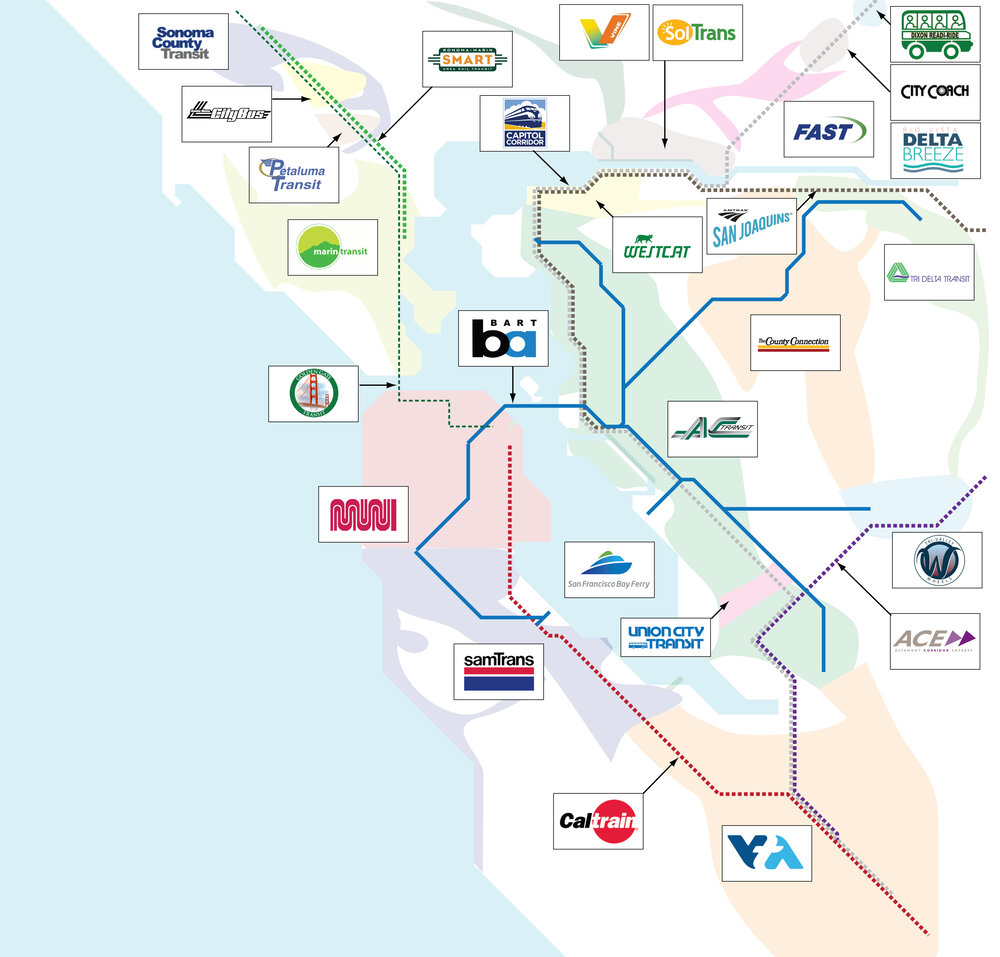Note: Metropolitan Shuttle, a leader in bus shuttle rentals, regularly sponsors coverage on Streetsblog San Francisco and Streetsblog Los Angeles. Unless noted in the story, Metropolitan Shuttle is not consulted for the content or editorial direction of the sponsored content.
If more is better, then the Bay Area should have one of the best transportation systems in the world.
Just before the Thanksgiving break, Seamless Bay Area, an organization dedicated to making the Bay Area's transportation system more user-friendly and rational, dropped a short report that counts and classifies our disparate, overlapping, conflicting, often redundant, and always independent transit operators.
According to Sara Barz, who wrote the report, there are 151 in total.
That may come as a surprise because, as the lead image implies, it's normally written that there are 27 "transit operators." But, according to Seamless's Barz:
A quick semantic digression: we at Seamless Bay Area think the term “Transit Operator” is overused. Yes, a Transit Operator can refer to an agency like BART, but it can also refer to a private company like MV Transportation, which many smaller transit agencies use to contract for drivers and vehicles.
Instead, Seamless breaks it down into transit operators, transit brands, and transit agencies:
An example of how this comes together: the Golden Gate Bridge, Highway, and Transportation District (“Golden Gate District”) is a Transit Agency, which provides two Transit Brands: Golden Gate Ferry and Golden Gate Transit. For both Golden Gate Transit and Golden Gate Ferry, the Golden Gate District is the Transit Operator because the Golden Gate District employs the staff and owns the vehicles that provide the transit service.
We highly recommend anyone who works at a Bay Area transit, uh, operator, take a look at the full study.
And if Streetsblog is not going too far out on a limb (it isn't) there is a connection between the sheer number of disparate organizations with another fact publicized by Seamless Bay Area: bus ridership is down some 16 percent over the last few decades. The solution, according to Seamless, is to figure out a true "Transit Network Manager” to coordinate all these agencies and force them to rationalize fares and services so connections are easy and reliable, and fares are based on distance instead of arbitrary transfers between agencies based on anything-but ease of use.
In the comments, write what you think of the report and what it says about the Bay Area's transit system(s).
As to the need for 151 agencies, Charlton Heston said it best, after trying to figure out how to buy a transit ticket(s) from Fremont to the San Francisco zoo:





